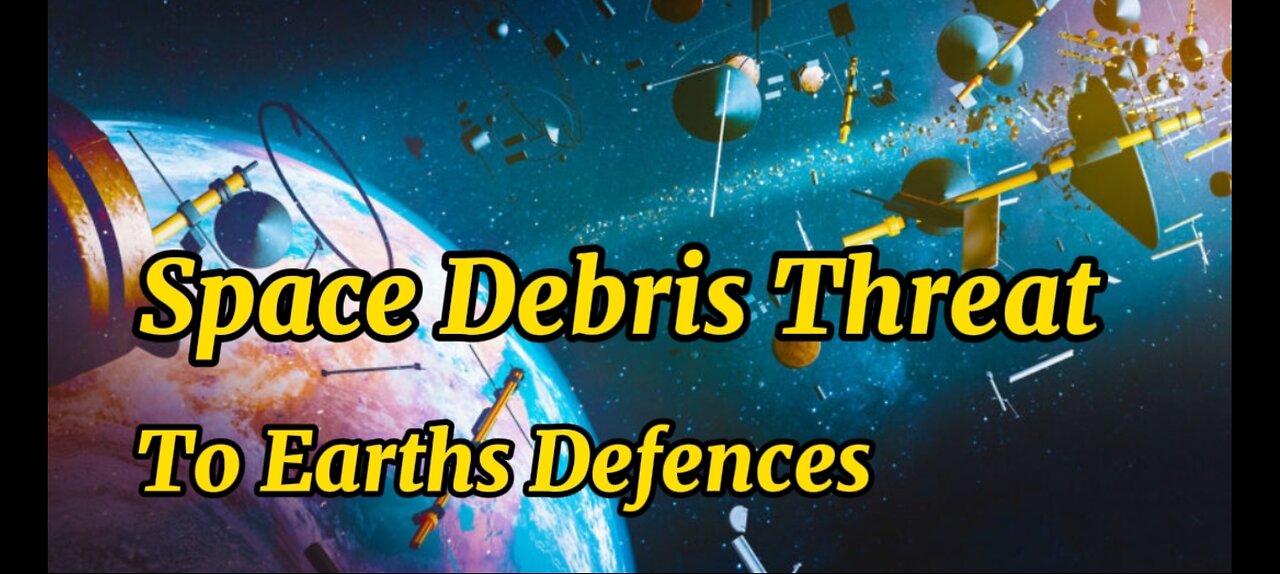Premium Only Content

Space Debris and it's Threat To our Mother Earth
Space Debris Threat to Earth’s Defenses.
As the number of satellites in Earth’s orbit continues to grow at an unprecedented rate, experts are raising concerns about the potential impact of space
debris on the planet’s magnetic field and atmosphere.
Now there are growing problems of Space Debris.
Current estimates suggest that there are nearly 10,000 active satellites in orbit, with companies working to deploy tens of thousands more in the coming decades.
Jonathan McDowell from the Harvard-Smithsonian Center for Astrophysics projects that the number of satellites could reach 100,000 within the next 10 to 15 years.
The rapid increase in satellite launches is resulting in a significant amount of space debris, including defunct rockets and satellites that are no longer operational.
Now Potential Impact on Earth’s Magnetic Field and Ionosphere are that -
The influx of metallic debris from defunct rockets and satellites could disrupt the ionosphere and magnetosphere, which are essential systems that protect Earth’s atmosphere and sustain life on the planet.
The ionosphere, located roughly 48 to 965 kilometers above the Earth’s surface, is a region where atoms and molecules become ionized by solar radiation, creating a layer of charged particles that reflects radio waves and enables long-distance communication.
The ionosphere also helps protect life on Earth by absorbing harmful ultraviolet radiation from the Sun.
The magnetosphere is a plasma cocoon that surrounds the Earth, interacting with the solar wind and cosmic radiation to create a shield against harmful particles and radiation from space.
The Scale of the Problem
Current estimates suggest that the amount of metallic ash being dumped into the ionosphere annually is equivalent to multiple Eiffel Towers’ worth of debris.
Unlike meteorites, which are small and contain only trace amounts of aluminum, the wrecked spacecraft are large and consist entirely of aluminum and other highly conductive materials.
The accumulation of conductive materials in the magnetosphere could potentially trap or deflect parts of the Earth’s magnetic field, leading to regional perturbations and holes above the ozone layer.
-
 LIVE
LIVE
Rance's Gaming Corner
1 hour agoTime for some RUMBLE FPS!! Get in here.. w/Fragniac
1,260 watching -
 23:55
23:55
CartierFamily
2 days agoElon & Vivek TRIGGER Congress as DOGE SHUTS DOWN Government
6.29K18 -
 5:43:44
5:43:44
Scammer Payback
2 days agoCalling Scammers Live
111K17 -
 18:38
18:38
VSiNLive
1 day agoProfessional Gambler Steve Fezzik LOVES this UNDERVALUED Point Spread!
84.7K10 -
 LIVE
LIVE
Right Side Broadcasting Network
10 days agoLIVE REPLAY: President Donald J. Trump Keynotes TPUSA’s AmFest 2024 Conference - 12/22/24
7,888 watching -
 4:31
4:31
CoachTY
19 hours ago $16.87 earnedCOINBASE AND DESCI !!!!
81K8 -
 10:02
10:02
MichaelBisping
18 hours agoBISPING: "Was FURY ROBBED?!" | Oleksandr Usyk vs Tyson Fury 2 INSTANT REACTION
37.2K8 -
 8:08
8:08
Guns & Gadgets 2nd Amendment News
2 days ago16 States Join Forces To Sue Firearm Manufacturers Out of Business - 1st Target = GLOCK
72.3K65 -
 10:17
10:17
Dermatologist Dr. Dustin Portela
2 days ago $17.02 earnedOlay Cleansing Melts: Dermatologist's Honest Review
116K6 -
 1:02:20
1:02:20
Trumpet Daily
2 days ago $36.49 earnedObama’s Fake World Comes Crashing Down - Trumpet Daily | Dec. 20, 2024
80.3K52